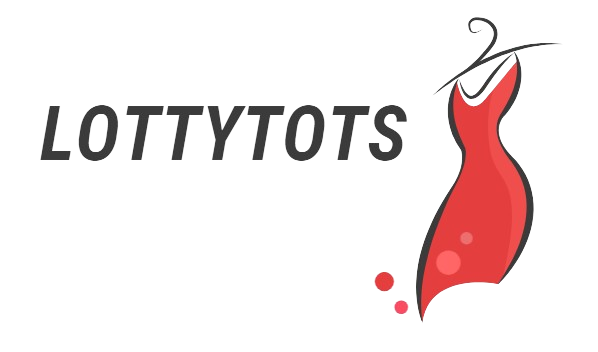From the power of the little black dress to the glamour of a statement necklace, clothing is much more than a way to keep ourselves warm and comfortable. The connection between fashion and psychology is an important one — understanding the way we choose to present ourselves can be a powerful tool in uncovering our minds and emotions. In this article, we’ll explore the concept of fashion psychology, delving into how our choice of dress can be a reflection of our inner feelings and how this understanding can help us to better understand ourselves.
1. Decoding Fashion Psychology: An Exploration
Understanding the psychological motivations behind fashion can help to make sense of its seemingly limitless changes and trends. Decoding fashion psychology involves recognizing the patterns to how we dress, and exploring the interconnection between our appearance and our emotions.
Fashion isn’t just about following the latest trends or donning the most expensive designer pieces– it can tell us a lot about who we are and how we feel. When someone wears a certain article of clothing, it is their unique expression of style that is being articulated. It can range from displaying a sense of strength and power, to vulnerability and fragility.
Here are 4 ways fashion psychology can help you understand your wardrobe:
- Identifying symbols of social status: For many who dart around fashion runways, symbols of their success and achieving certain hierarchy in society are displayed in how they’re dressed.
- Bringing awareness to body image: Your body image is the way you think and feel related to the way your body looks. Clothing and fashion statements can be a powerful way to show gratitude for your body and all it does.
- Articulating self-identity: Clothing can be a form of self-expression, where people dress according to their mood and emotions, or as a reflection of their unique identity.
- Constructing self-confidence: Clothes have a psychological effect on how we feel, and looking great can be a valuable confidence booster.
Fashion is an ever-evolving landscape, and decoding fashion psychology is a great way to engage with and understand the choices we make in the wardrobe department. At the end of the day, whatever we may be wearing, it shapes the way we feel and that is the ultimate outcome.
2. Unveiling the Power of Dress
A well-selected wardrobe is a key part of expressing your personal style and creating a distinct look. There is something empowering about wearing the right combination of colors, fabrics, and styles. The way you dress can affect the way people view you, but it can also have an impact on your own personal confidence.
Cocktail dresses, for example, are a classic choice that can lend sophistication to any occasion. A well-tailored dress can also flatter the figure. At a formal event, a stylishly-cut formal dress may make a woman feel more in control of her presentation. Evening gowns in bold colors and interesting textures can imbue a feeling of confidence and strength, while still appearing elegant.
- Women’s Business Wear: Choosing the right clothing for the workplace can be an empowering decision. Professional attire can boost confidence and help bring out the best qualities in an individual. Suits and tailored separates are the ideal choice for a polished look.
- Casual Clothing: When dressing casually, it’s essential to keep comfort as a priority. Comfortable clothing can help to create a relaxed and easy-going atmosphere.
Your clothing choices can be an expression of who you are and where you want to be. Whether shopping for dresses or pantsuits, look for the look that makes you feel like the best version of you. The right look can help you to go out and conquer the day!
3. Investigating the Physiology of Fashion
The fascination with fashion has a deep rooted physiology. Our perception and cognitive processes play a major role in how we embrace and view clothing. Here are three ways investigating how we interact with fashion.
- Understanding Taste
- Studying Colors
- Analysing Meanings
Fashion is a form of self-expression so first, people need to establish their own taste and style. We look at fashion from a personal and subjective perspective, which can then be compared to society’s trends. Understanding both the individual and collective attitudes and tastes towards fashion can open a door to a much deeper level of fashion understanding.
Colors are another key element when it comes to fashion. Studies have shown that colors can evoke emotions in people. The psychology of color is embedded in marketing and advertisement and understanding this sentiment can help people assess and create the most desirable shades.
Lastly, the meanings behind fashion must be understood. Clothes have messages that people are trying to convey to the rest of the world. By learning the language behind print, design, and patterns, one better understands this visual communication.
4. Connecting Style and Self-Expression
Fashion can be more than just an expression of personality — it can be a form of self-expression. As we try on the latest trends, we can explore and experiment with different styles of clothing, makeup, and accessories. Clothing is an outward expression that can tell the world a lot about you. With fashion, you can emphasize the uniqueness of your own style.
What Different Styles Can Communicate: Every style choice you make sends out a specific message about who you are, what you care about, and how you want to be seen. Bright colors can evoke a sense of creativity and ambition, while subtle, neutral tones can give off an air of sophistication and classic elegance. Clothes and accessories that feature artistic or unusual designs can be used to show your interest in fashion and creative expression.
Benefits of Self-Expression Through Clothing: Not only can self-expression through clothing be an enjoyable activity in itself, but it can also have some tangible benefits. Wearing clothes that you feel confident and comfortable in can lead to a boost in self-esteem, and it can be a way to showcase your personal style and creativity.
- Clothing is an outward expression of who you are and what you care about
- Bright, vivid colors can express creativity and ambition
- Neutral tones can give an air of sophistication
- Expressing yourself through clothing can lead to a boost in self-esteem
5. The Future of Fashion Psychology: Looking Ahead
The future of fashion psychology has limitless potential, and it’s fascinating to think what we can expect in the future. As fashion and psychology continue to intersect, here are five developments that may become commonplace going forward.
- More data-driven designs: Data-driven designs are expected to drive trends in the fashion industry over the next few years. This includes the use of AI, big data, and machine learning to create tailored designs for different body types and sizes.
- More use of technology: Technology will also become increasingly prevalent in the fashion industry. Wearable devices like smartwatches and fitness trackers will become commonplace, as will virtual and augmented reality fashion shows.
- Increased personalization: Fashion psychology is already enabling more personalized shopping experiences. As consumer behavior continues to be studied, brands will come to better understand individual shoppers, leading to more tailored designs and campaigns.
Finally, sustainability and environmental issues will take center stage in the fashion industry. Consumers will expect greater transparency from brands and retailers and the industry will need to take steps to reduce its environmental footprint.
Fashion psychology is set to shape the industry in the years to come, and the possibilities seem endless. It will be exciting to see how fashion psychology will evolve and what insights it will bring for brands, designers, and shoppers.
Whether it is a luxury watch or a designer dress, fashion can can tell us a lot about ourselves. Understanding the psychology behind the pieces we wear can put us one step closer to understanding why we dress the way we do. As fashionable choices become an increasingly important aspect of our lives, understanding the hidden elements of fashion can help us to make educated choices about the clothing we wear and the messages we send about ourselves.


